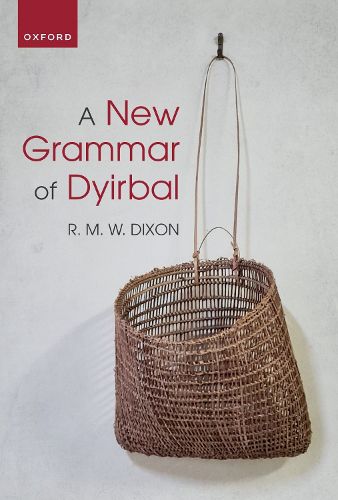Readings Newsletter
Become a Readings Member to make your shopping experience even easier.
Sign in or sign up for free!
You’re not far away from qualifying for FREE standard shipping within Australia
You’ve qualified for FREE standard shipping within Australia
The cart is loading…






R. M. W. Dixon's landmark 1972 grammar of the Dyirbal language of North Queensland is one of the best-known and most widely-cited language descriptions in the history of linguistics. In the fifty years since its publication, Dixon has continued his detailed work on the language, extending and refining the descriptions in light of more recent theoretical advances. The resulting A New Grammar of Dyirbal offers a comprehensive contemporary grammar of the language, reanalysed in myriad ways and drawing on an extensive corpus of texts. Among its many new features are further discussion of the applicative/causative derivation; a fresh focus on the role of the pervasive 'pivot', the syntactic linking of S and O functions; a detailed account of the two antipassives and their semantic contrast and phonological conditioning; and an extended account of relative clauses. The volume is accompanied by a companion website hosting the full set of textual data on which the grammar is based, as well as a thesaurus/dictionary of nouns, adjectives, and verbs across ten dialects of Dyirbal.
$9.00 standard shipping within Australia
FREE standard shipping within Australia for orders over $100.00
Express & International shipping calculated at checkout
R. M. W. Dixon's landmark 1972 grammar of the Dyirbal language of North Queensland is one of the best-known and most widely-cited language descriptions in the history of linguistics. In the fifty years since its publication, Dixon has continued his detailed work on the language, extending and refining the descriptions in light of more recent theoretical advances. The resulting A New Grammar of Dyirbal offers a comprehensive contemporary grammar of the language, reanalysed in myriad ways and drawing on an extensive corpus of texts. Among its many new features are further discussion of the applicative/causative derivation; a fresh focus on the role of the pervasive 'pivot', the syntactic linking of S and O functions; a detailed account of the two antipassives and their semantic contrast and phonological conditioning; and an extended account of relative clauses. The volume is accompanied by a companion website hosting the full set of textual data on which the grammar is based, as well as a thesaurus/dictionary of nouns, adjectives, and verbs across ten dialects of Dyirbal.